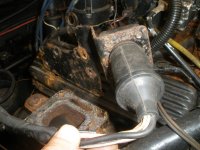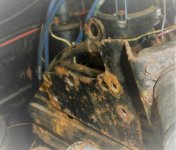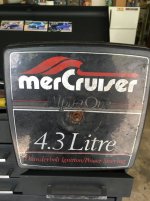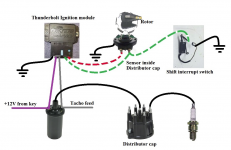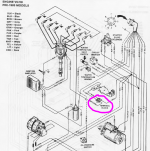Rivergator
Petty Officer 1st Class
- Joined
- May 7, 2013
- Messages
- 240
Nola Mike, I don't know where the terminal block is. The white/green wire that goes to the distributor comes from the ignition amplifier and that is all. The other white/green wire comes from one side of the shift interrupter switch and has a round connector on it (see picture). So it could not have gone to the distributor, because there is no way to connect to it, but must have been connected to a screw connection. The nagging question is WHERE. The other side of the shift interrupter switch has a black wire which is ground. But I don't see any terminal block.
Here is a question to all of you who are very knowledgeable with electronics and electrical systems on boats and cars in general. What would happen (while the engine is running) if the minus pole of the coil comes in contact with ground? And also what would happen if the plus pole of the coil comes in contact with ground?
achris, you posted a comment, but it is blank????
Here is a question to all of you who are very knowledgeable with electronics and electrical systems on boats and cars in general. What would happen (while the engine is running) if the minus pole of the coil comes in contact with ground? And also what would happen if the plus pole of the coil comes in contact with ground?
achris, you posted a comment, but it is blank????





















